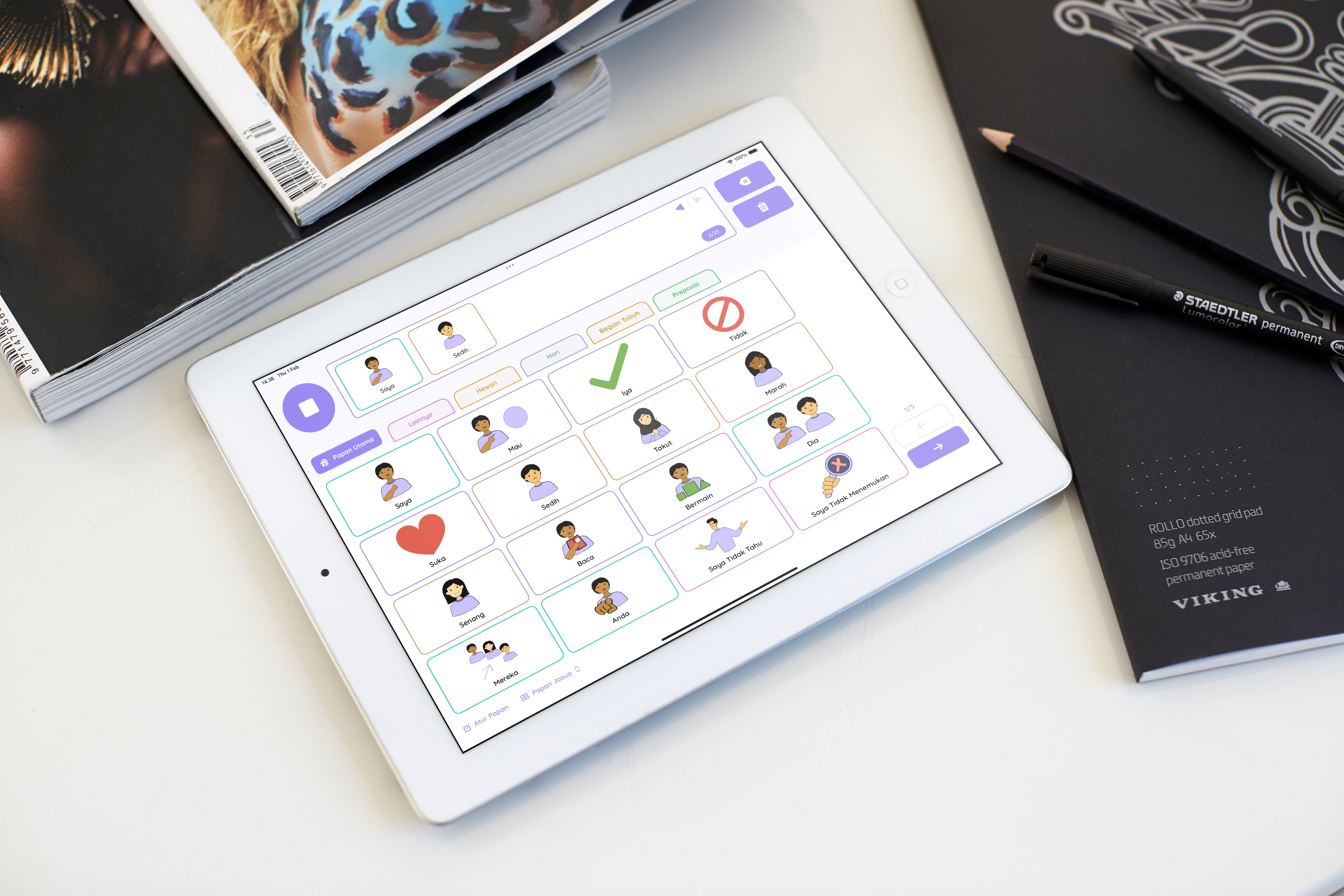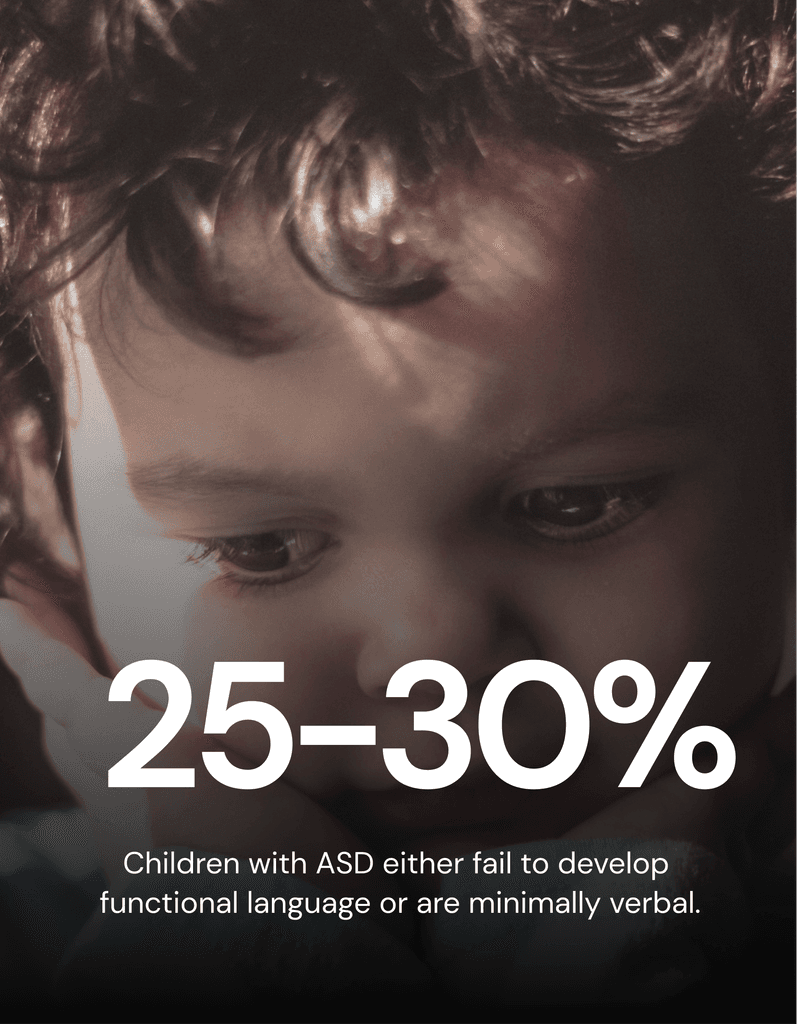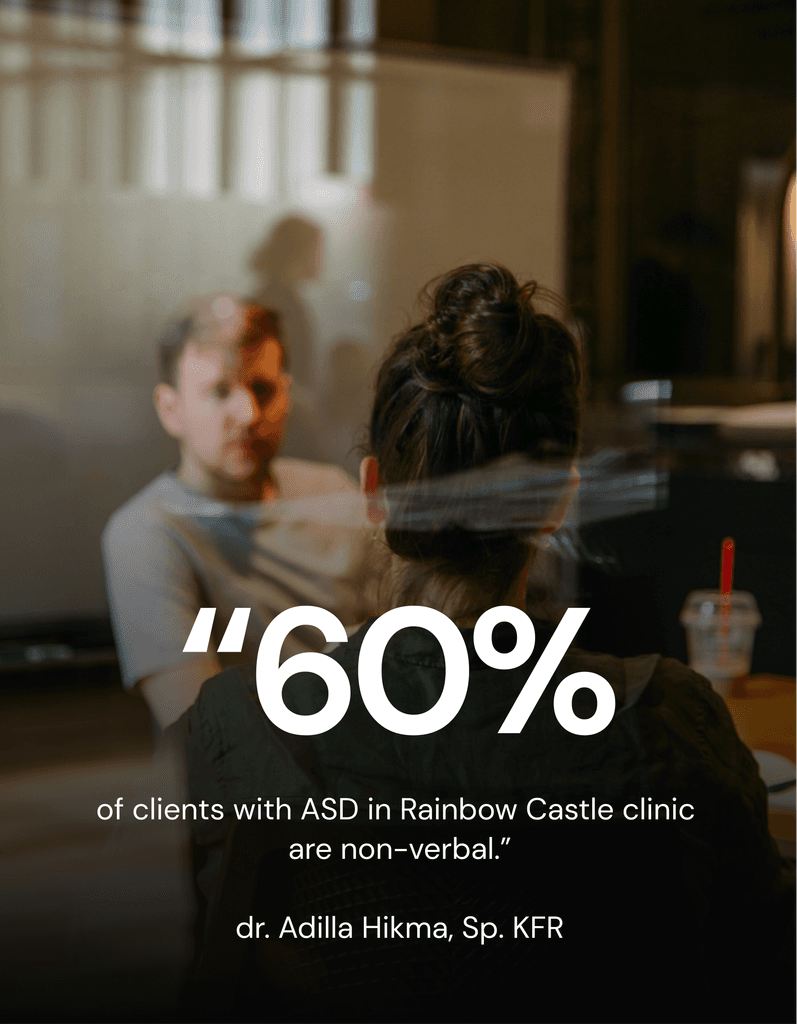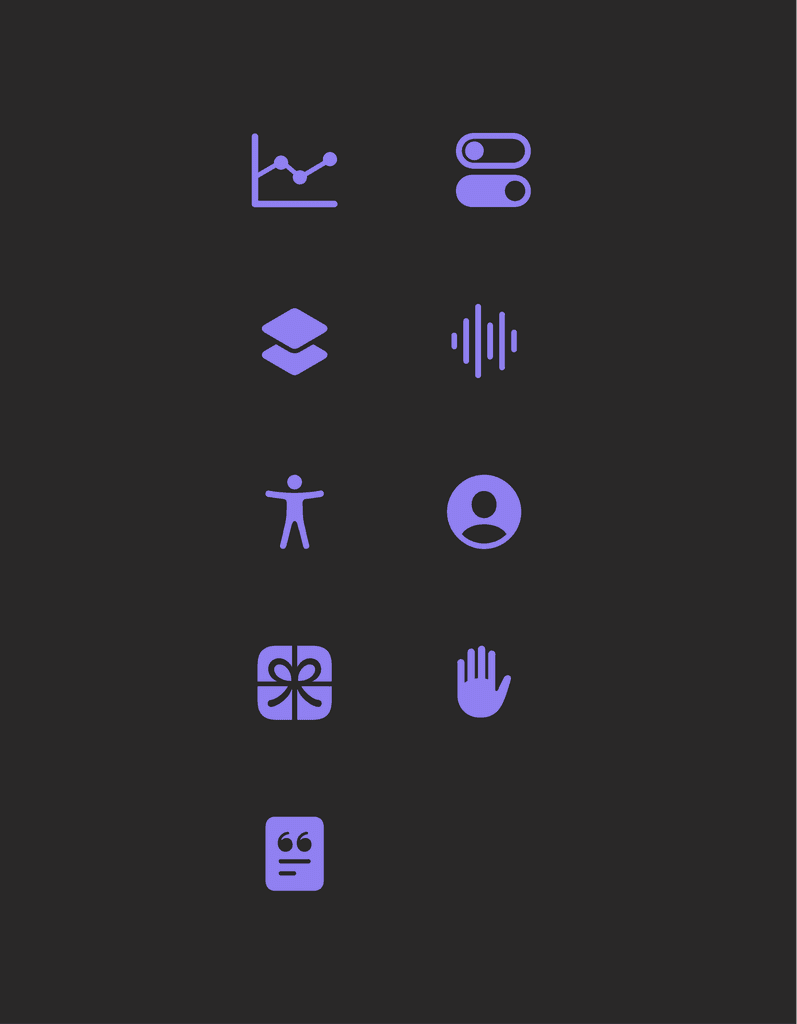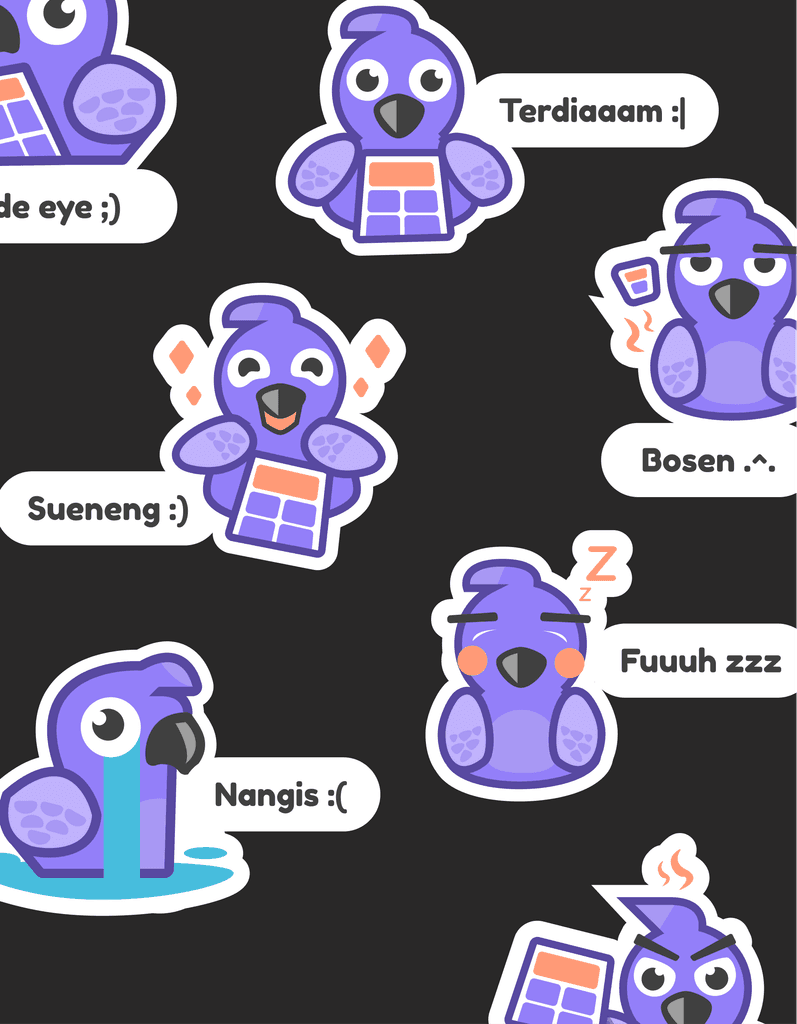The Brief
The Process
Define Role & Contribution
Team
Radya ( Lead Designer ) - Me
Rivian ( Video Editor, Branding )
Nando ( Lead Developer )
Bayu ( Developer )
Jevon ( Developer )
Jojo ( Developer )
Gery ( Project Manager )
Timeline
3 Months - Q4 2023
Industry
Education, Health, iPad App, iOS
Main Responsibilites
As a Lead Designer, my role is to organize the backlog for the entire design team and set goals for each ongoing sprint. I also act as UI/UX designer and illustrator for the tickets I work on.
Brainstorm & Desk Research
Challenge Refined
We spent about a month doing desk research and going through several iterations for the product we wanted to create. Eventually we came across AAC (Augmentative and Alternative Communication Tools), which are tools designed for non-verbal children with special needs to help them communicate.
Unfortunately, current augmentative and alternative communication (AAC) tools have some drawbacks:
Expensive : These tools can be expensive and may not be affordable to all groups in need.
Less Indonesian context : The available AAC applications, while fairly well known, lack sufficient Indonesian context.
Less accessible : Not all AAC tools are suitable for children with special needs due to insufficient accessibility features.
To deepen our understanding, we conducted field research at Yayasan Sayap Ibu Bintaro and Rainbow Castle Clinic in Jakarta. We identified the following target users.
Target User
Khaled - User
Demography : 12-year-old teenager at Yayasan Sayap Ibu.
Background : Khaled has cerebral palsy, low vision, and a speech disorder.
Location : Yayasan Sayap Ibu, Bintaro, Indonesia
Needs: An effective way to communicate what he wants or needs from others.
Motivations : Striving for improved independence and effective communication.
Frustrations : Difficulties in articulating clear verbal expressions, leading to challenges in expressing desires and needs effectively.
dr. Adilla Hikma Zakiati SpKFR - Practitioner
Demography : Spesialis Kedokteran Fisik dan Rehabilitasi Medik
Background : dr. Adilla is one of the founders and a practitioner at Rainbow Castle, a play-based growth and development clinic in Indonesia. Most of her clients (roughly 95%) are children with Autism Spectrum Disorder and 65% of them failed to develop the ability to speak verbally.
Location : Rainbow Castle (Kemayoran, Jakarta Pusat)
Needs : Improving the communication methods employed in her clinic, with a focus on aiding non-speaking children with Autism Spectrum Disorder (ASD).
Motivations : The chance to positively influence the communication abilities and holistic growth of non-speaking children with ASD.
Frustrations : Limited access to advanced communication tools and the lack of user-friendly and customizable communication apps designed specifically for non-speaking children with ASD.
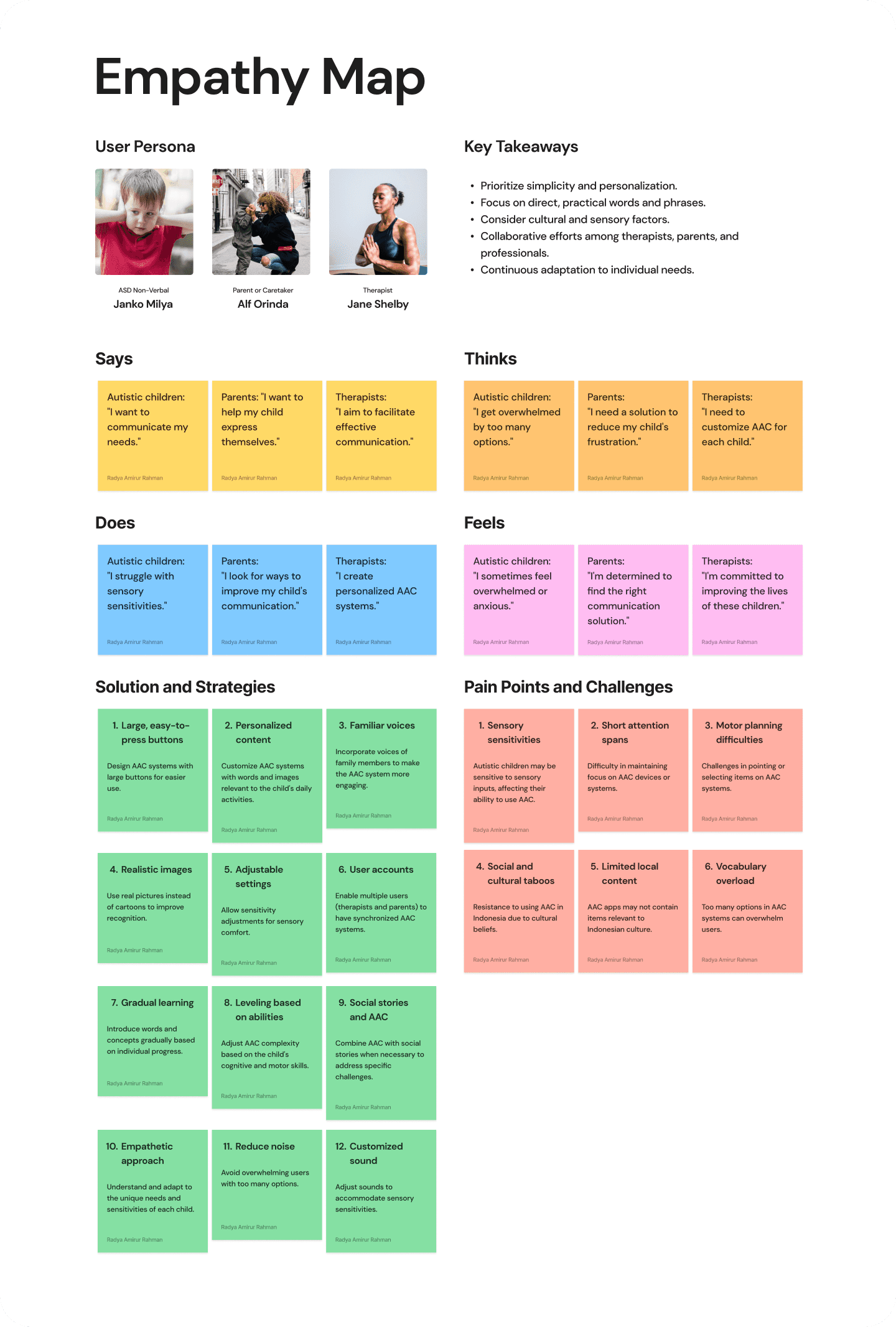
By defining the target user, we have determined the direction of our product. Unfortunately, designing for children with special needs requires special considerations. Here are some things to keep in mind when designing for autistic children
Use soft, gentle colors.
Use simple language.
Make text legible.
Use images to support meaning.
Avoid scrolling and distracting interactions.
Allow users to customize the interface.
Design Phase - UI/UX Designer & Illustrator
App Structure
This is the beginning, before we start the design process, we need to create a map of the features that will be in this application, along with the details to ensure that the flow we create is the most efficient flow for users to use.

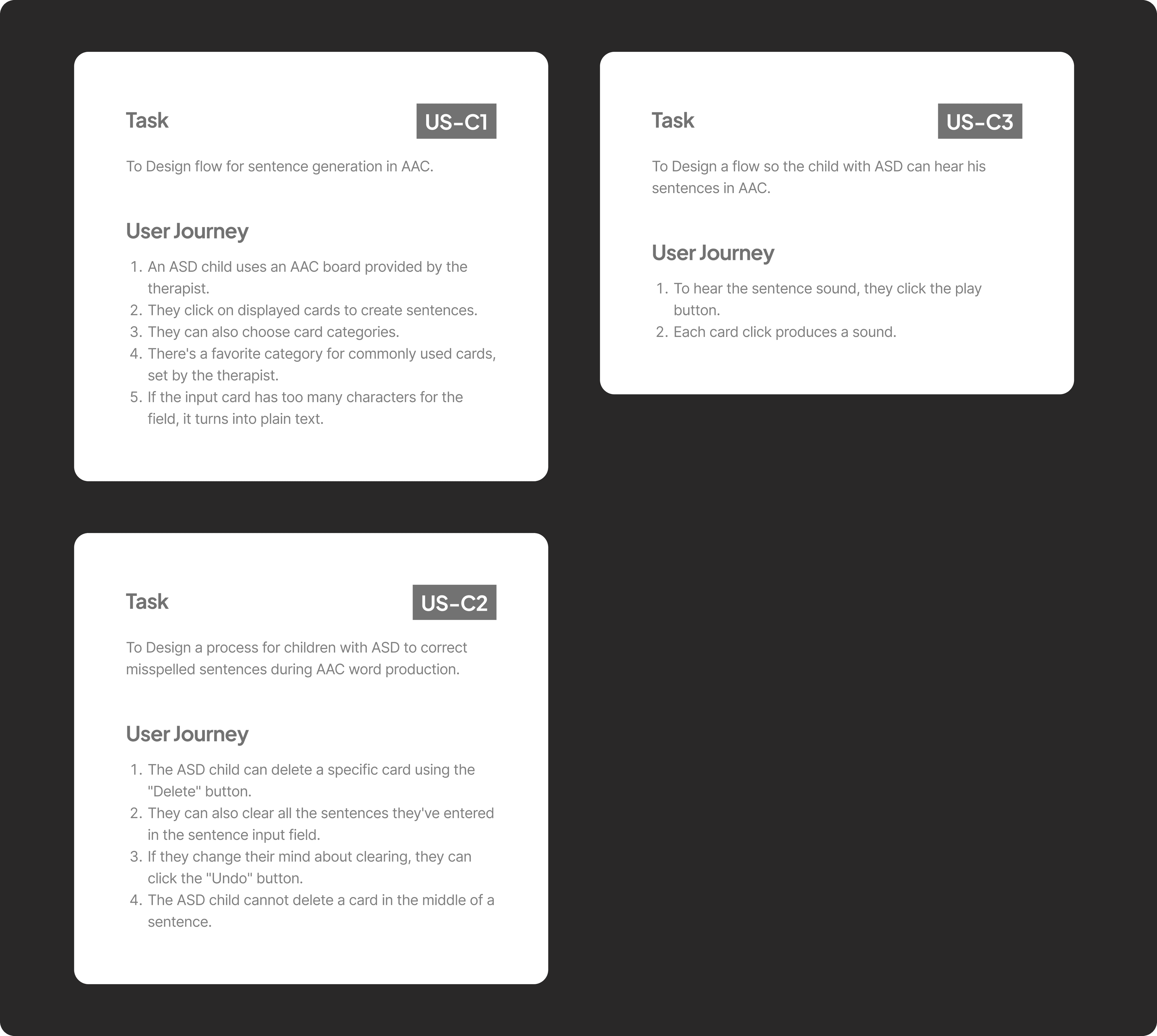
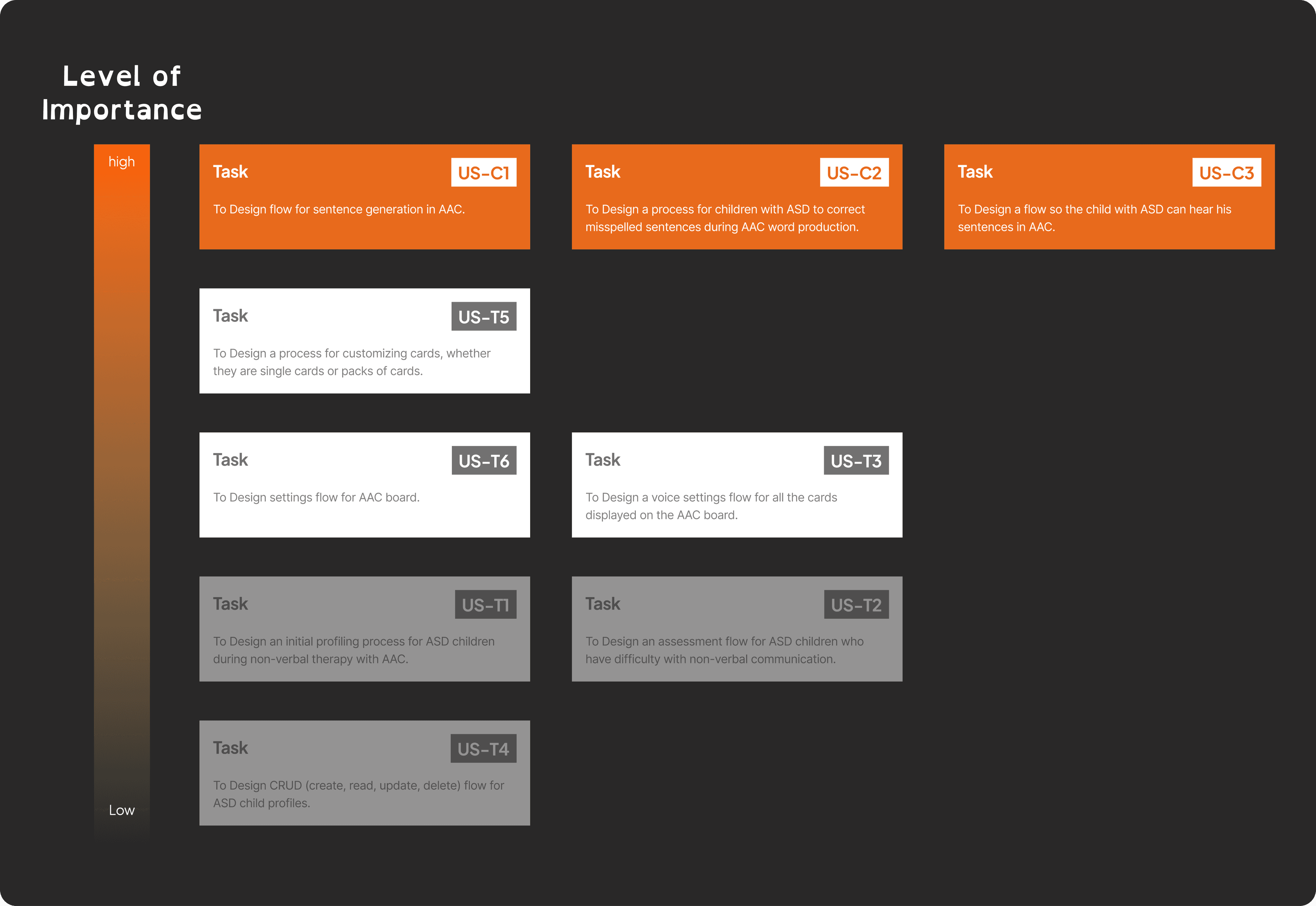
Reusable Components
This application is created with a primary focus on atomic design approaches, as there will be numerous features to develop. This approach increases the effectiveness of the existing page creation.
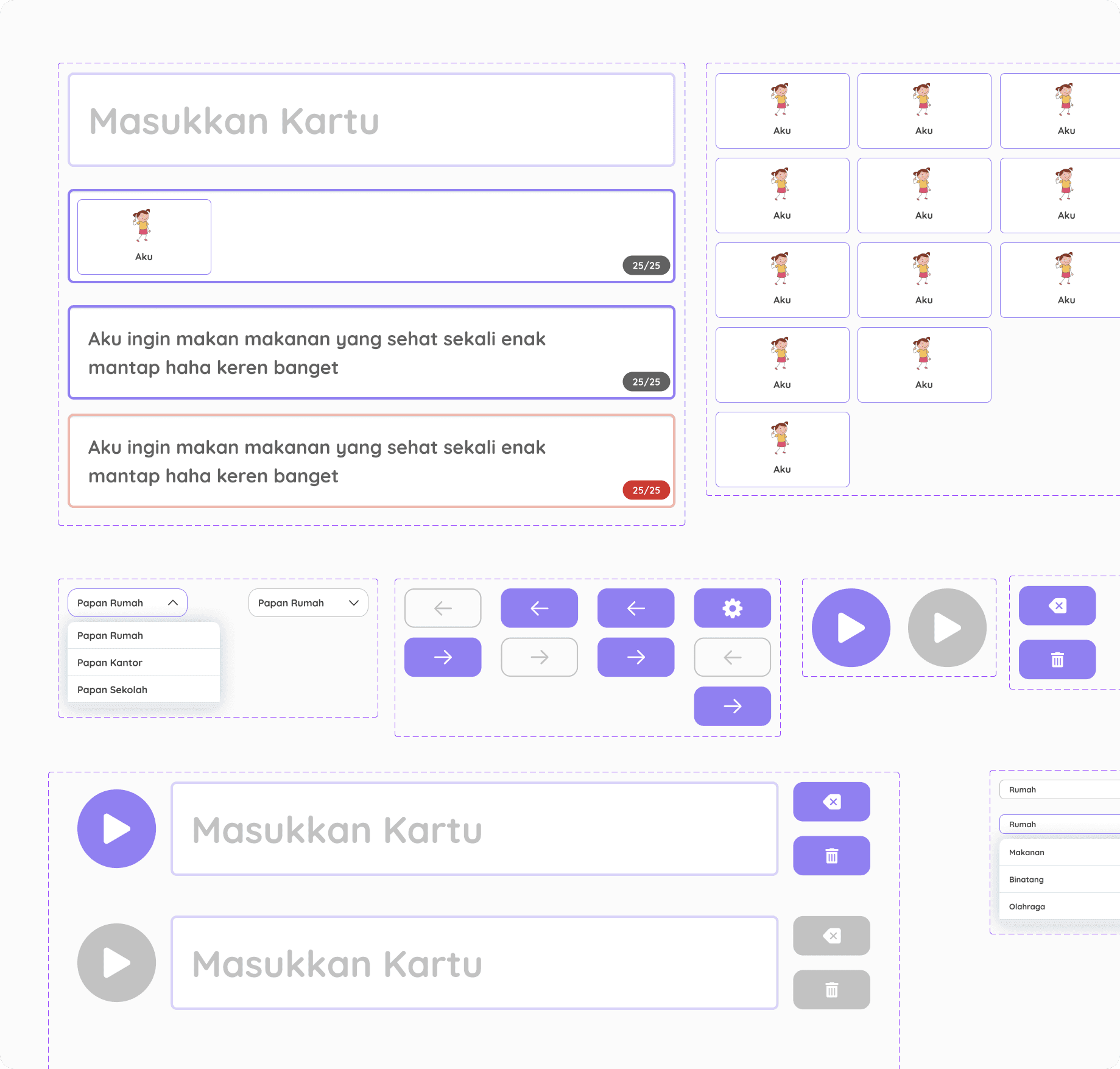
Hi-Fidelity Design
We design the visuals based on the data we collect and iterate for each page, as we believe the initial design may not be the best. We also make adjustments to the design based on the results of our previous research.
Create a mascot design for Alica
Since Alica is a tool for non-verbal children to express themselves, the mascot is designed as a friendly and cheerful parrot. By representing Alica, the mascot aims to convey that it can help express different emotions. Alica's parrot character is designed with a range of expressions to enhance its relatability.
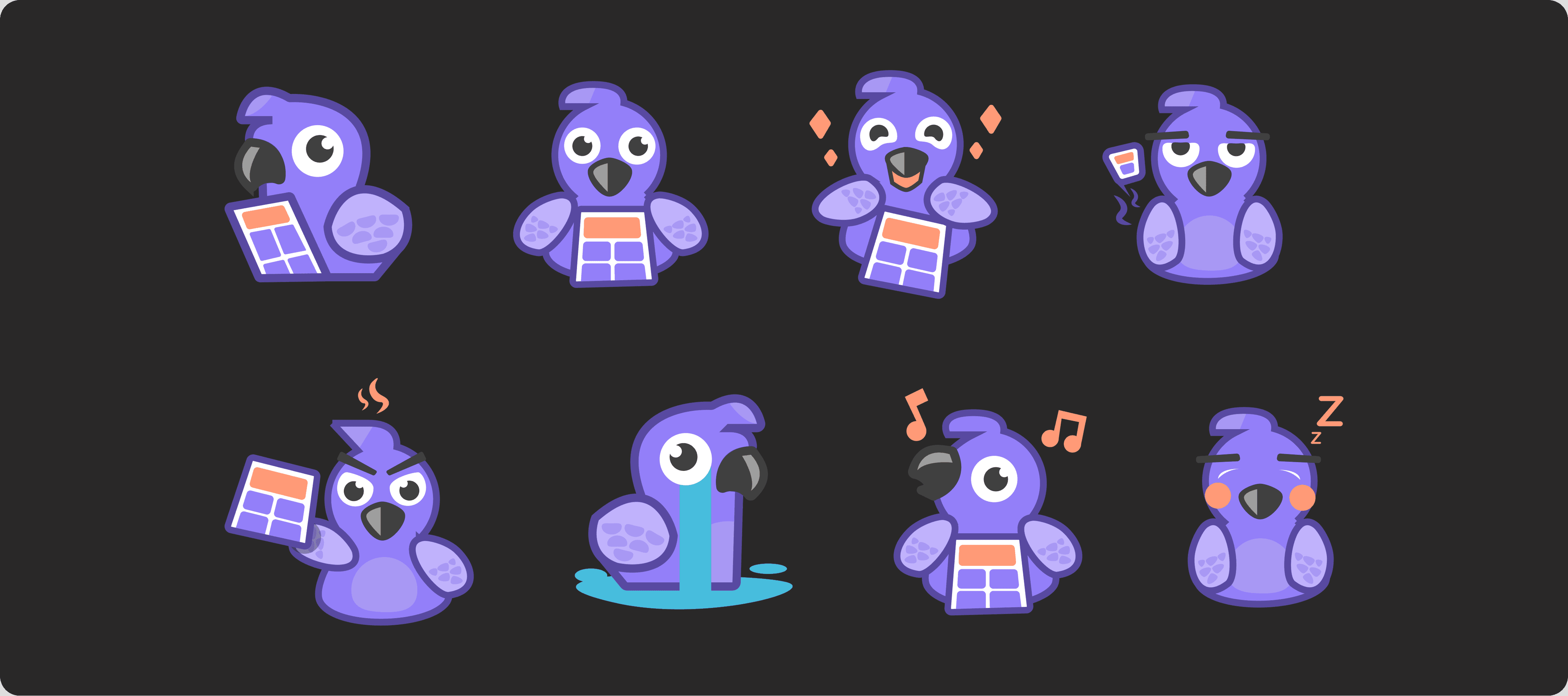
Creating up to 167 AAC cards with Indonesian-related contexts
During the development of Alica, I also played the role of an illustrator in creating 167 cards with Indonesian-related contexts. These cards cover various topics such as public transportation, food, body parts, etc. This is crucial because introducing children to their environment requires images that are relatable. Simple things like how buses in the US look different from those in BSD are taken into account.
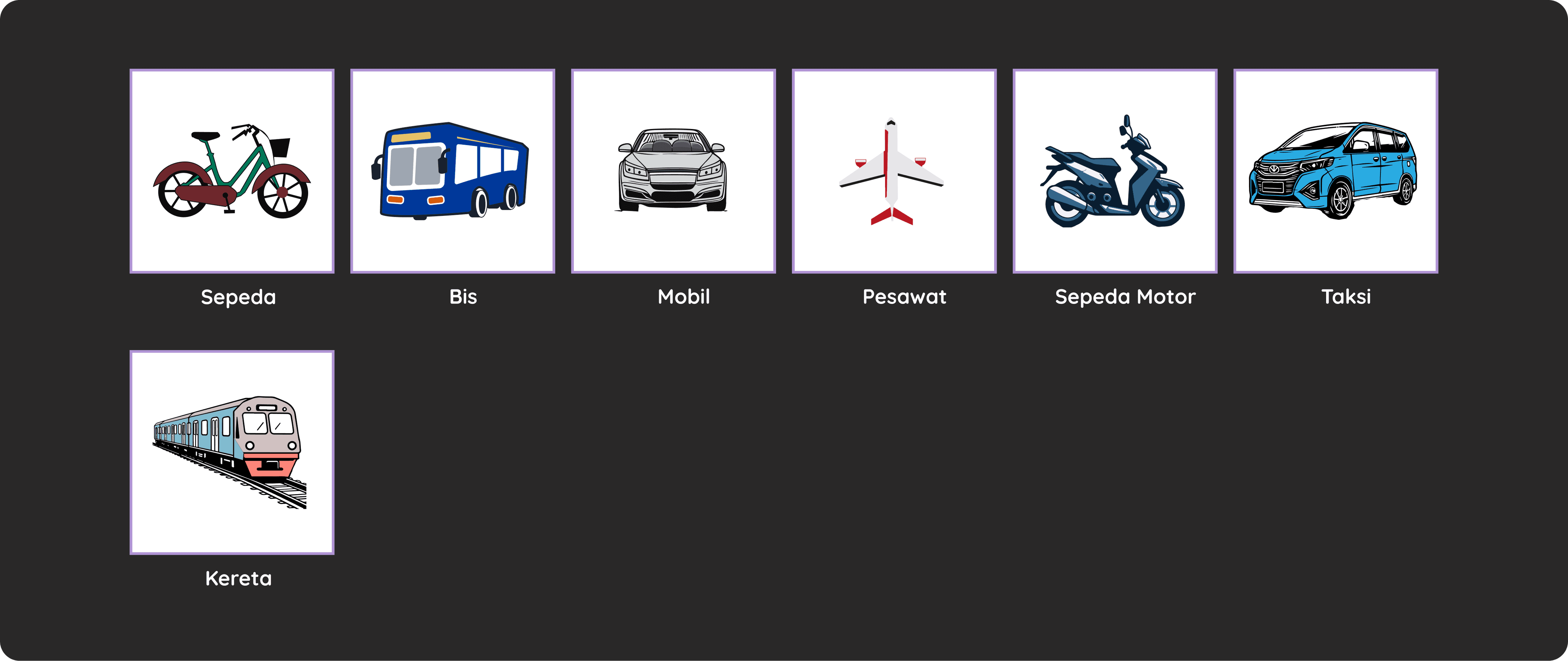
Alica supports dark mode
The decision to implement dark mode is based on its ability to reduce eye strain when using the iPad. Additionally, it can assist children who have difficulty seeing clearly by providing high contrast in dark mode.

Accessibility Friendly
The features in Alica are tailored to the specific needs of children. Alica offers features such as dyslexia-friendly font settings, custom background settings for improved contrast, a remove background feature, and a voice that mimics a familiar person's voice to the child.
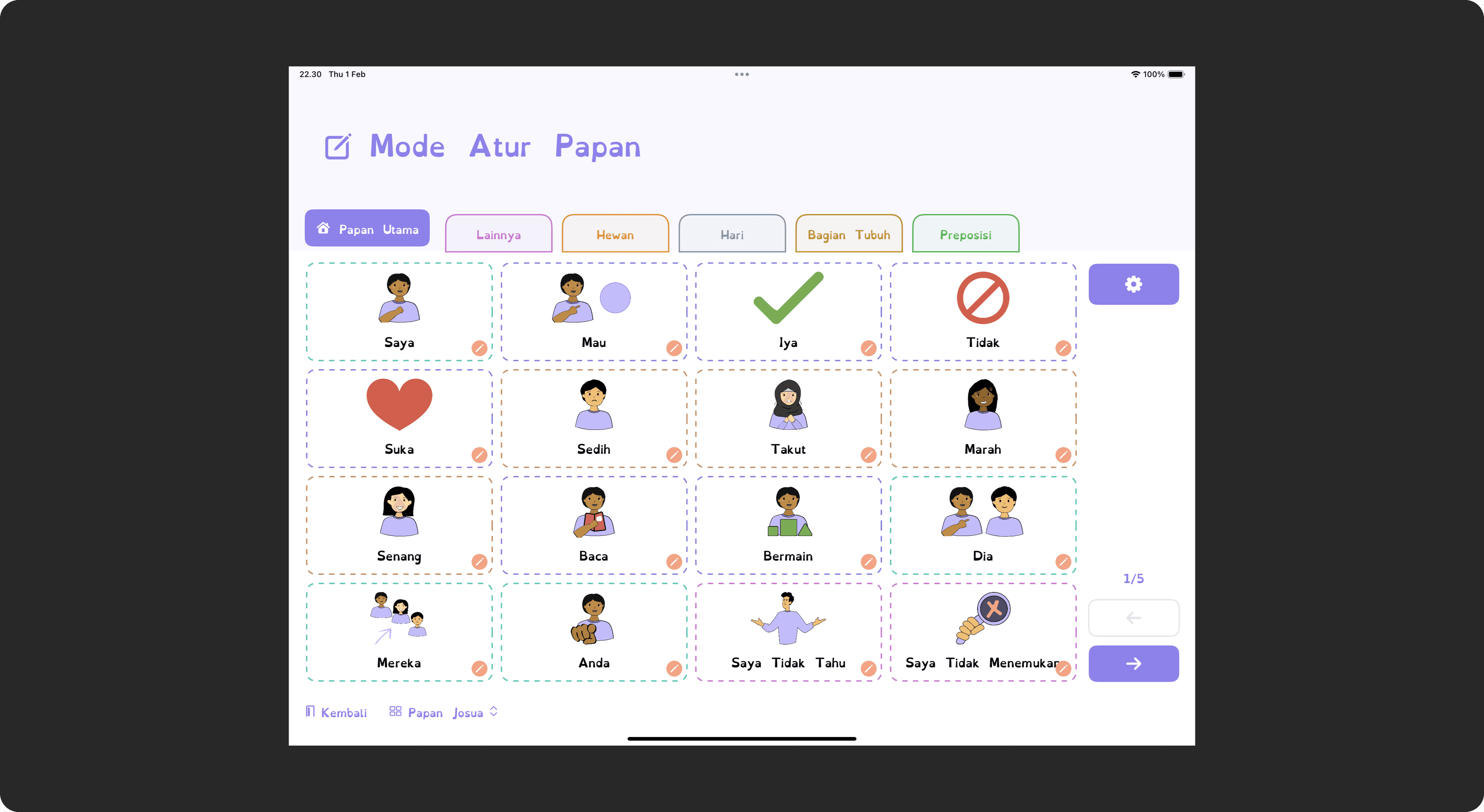
Small Things Matters
Small details, such as centering the page on large grids and using dominant colors for buttons, are incorporated to make navigation easier for children with special needs. In addition, the positions of Alica's cards are intentionally fixed to prevent disruption or distraction during page transitions. In addition, there is intentional friction on the parent buttons to prevent accidental presses by the child.
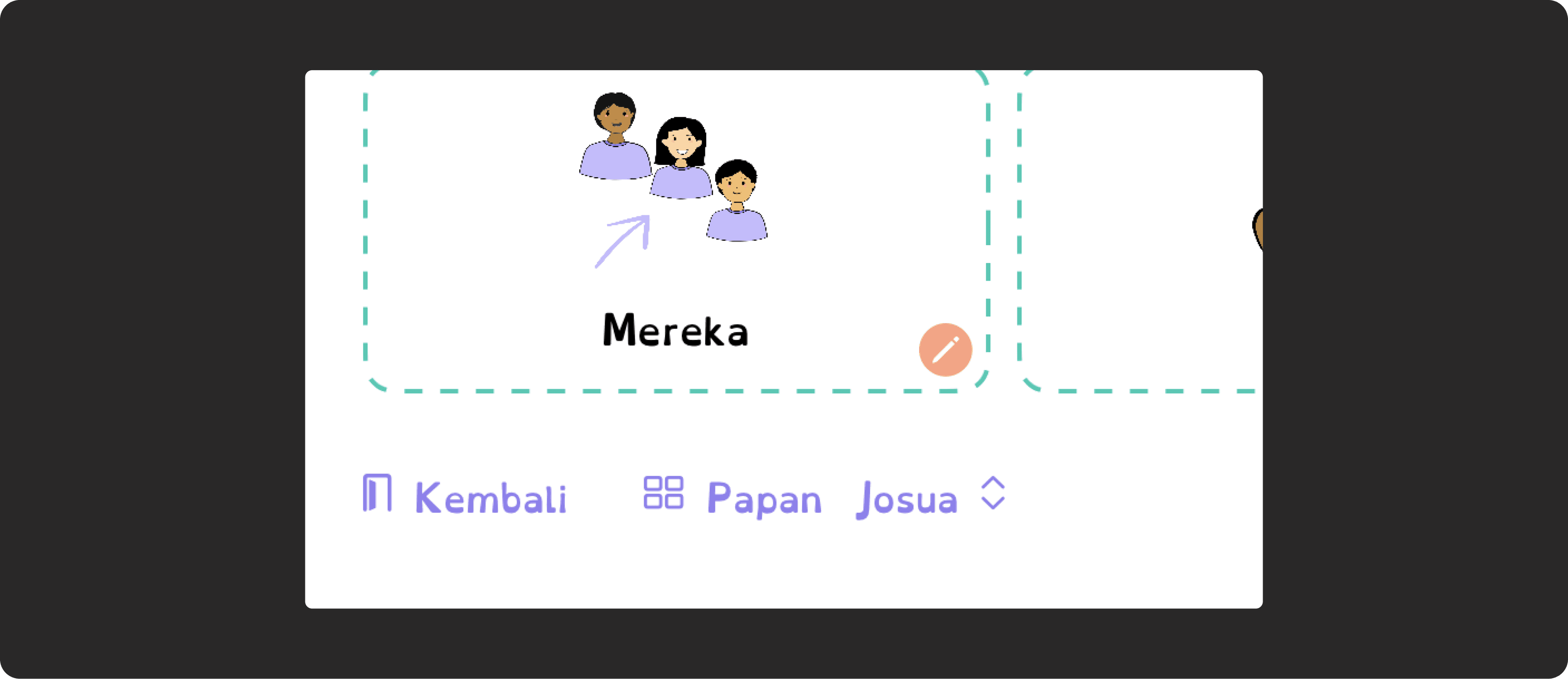
Usability Testing & Expert Review
We iterated through a series of usability tests to refine the approach of the application we've developed. Our testing involves real users from Yayasan Sayap Ibu, Bintaro and Rainbow Castle Clinic. The testing process is ongoing and continues to this day.
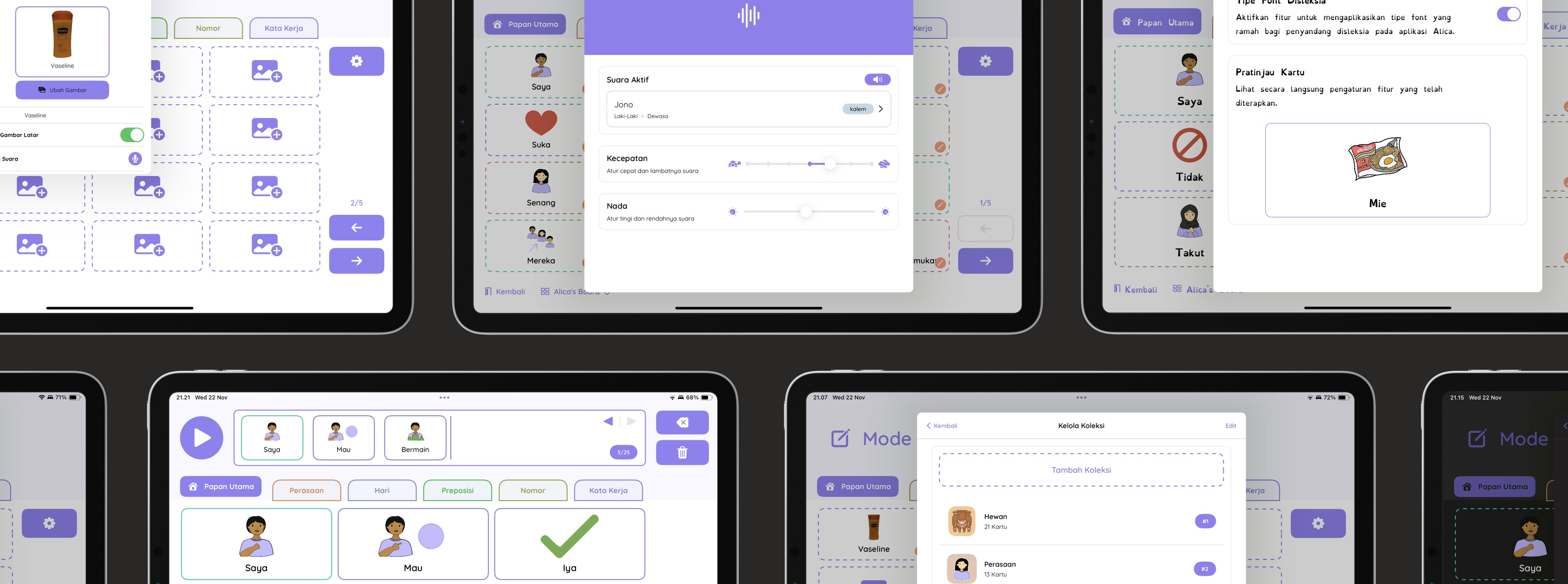
The Results
About The App
Alica stands for Assistive Language Interface for Non-Speaking Communicators. It is also known as the tailor-made AAC app for our non-speaking friends!
Alica is designed as an AAC App with a specific focus on localized content. This approach helps individuals with autism better comprehend words, especially considering the unique context of terms used in Indonesia, such as differences in bus terminology. Its high level of customization sets Alica apart, allowing users to adjust grid size, sound settings, and more.
After several usability tests, Alica's flexibility has proven to be a game-changer, offering not only significant benefits to individuals with ASD but also extending its utility to those with conditions like cerebral palsy, stroke, and other symptoms that prevent verbal communication.
Available on App Store
Download Alica
Main Features
Inclusivity Across Contexts
Personalization at Its Core
AI Voice OptionsLocalized Cultural Connections
Always Available
Reflection & Evaluation
Project Evaluation
This project is still ongoing and is currently in the selection process to secure funding from Apple for future product development. In addition, Alica has received a lot of positive feedback from people who work with children with special needs.
My Personal Reflection
This project has given me valuable insights into creating applications that focus on accessibility, both for children with special needs and for their caregivers or therapists.
Partnerships and expert reviews are crucial, especially for theme-based applications like Alica. Sometimes what we think is right is not necessarily what is practical in the field.
I have learned a lot about being an effective leader and how to manage the design backlog with the team.
